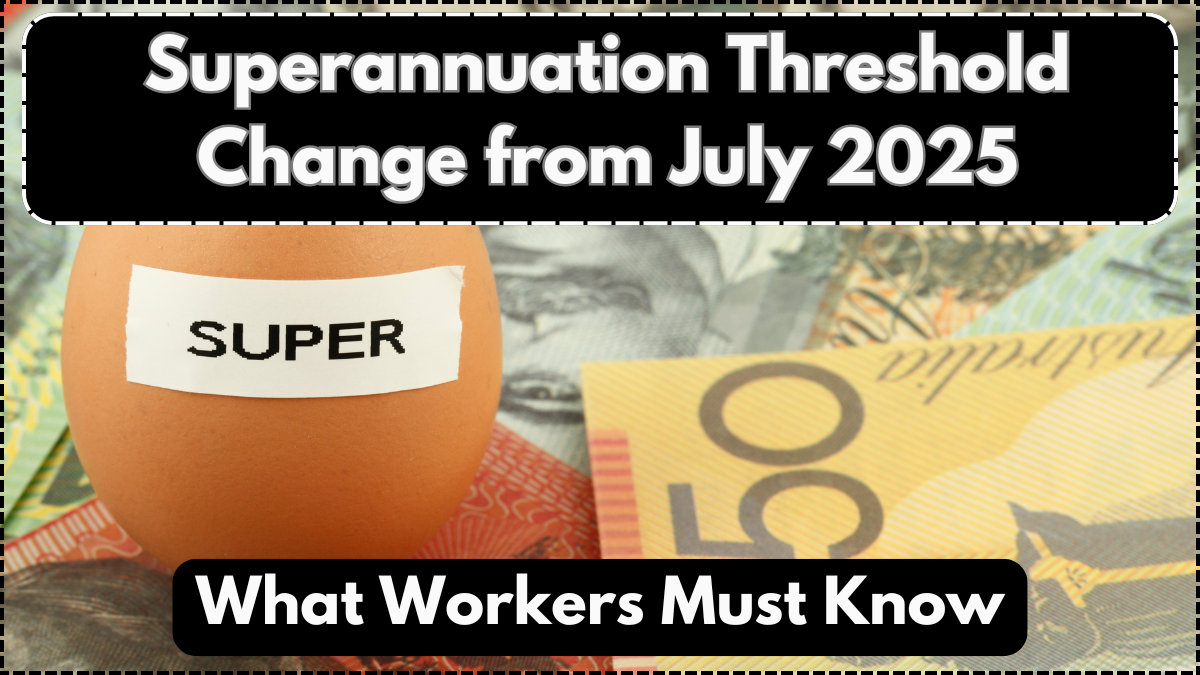The Australian government will eliminate the $450 monthly threshold for superannuation guarantee contributions. This means that all employees, regardless of how little they earn in a month, will be entitled to receive super contributions from their employer. This reform is part of a broader suite of Australia retirement changes aimed at strengthening long-term financial security for workers.

Who Will Benefit From This Super Rate Update?
The main beneficiaries of this superannuation threshold July 2025 change are casual and part-time workers, many of whom previously missed out on super contributions due to low earnings. Under the current system (as of June 2025), employees must earn at least $450 in a month to qualify for super payments. That threshold has often excluded gig workers, students, and part-time staff in retail, hospitality, and care sectors.
With this change, every dollar earned now counts. Employers will be required to contribute the superannuation guarantee (currently 11.5% and scheduled to rise to 12% by July 2026) regardless of the employee’s earnings for the month. It’s a major super rate update that reflects the shift toward more flexible and non-traditional employment models.
What Employers Need to Prepare For
From a business perspective, this change requires updated payroll systems, accurate classification of all workers, and timely super payments for everyone. It’s essential to budget for the increased super obligations and communicate the changes clearly with employees.
Employers who fail to meet their new obligations could face penalties under the Superannuation Guarantee Charge (SGC) regime. In practical terms, this means businesses with high volumes of casual staff need to ensure their payroll platforms are equipped to manage micro-contributions efficiently and cost-effectively.
Why This Change Matters for Australia’s Retirement Future
These Australia retirement changes are designed to improve equity in the retirement system. Historically, women and younger workers were disproportionately affected by the $450 threshold. Eliminating it is expected to boost long-term savings and reduce the gender super gap.
Superannuation is compulsory, but the system relies on continuous, even small, contributions over time. Increasing coverage among low-income earners enhances retirement outcomes without major strain on government pensions. It also sends a signal that every hour of work matters, whether you’re a barista working 10 hours a week or a freelancer juggling projects.
Key Figures and Timeline
Here’s a summary of the changes coming into effect:
| Feature | Before July 2025 | From July 2025 |
|---|---|---|
| Superannuation threshold | $450/month | No minimum threshold |
| Eligibility | Employees earning over $450/month | All employees, regardless of earnings |
| Super rate | 11.5% | 11.5% (rising to 12% in July 2026) |
| Employers affected | Businesses with low-income workers | All employers with staff of any earnings level |
Looking Ahead: Implications for Workers and Policy
This superannuation threshold July 2025 reform doesn’t just affect paycheck deductions — it recalibrates how Australians view the connection between income and retirement. It aligns the system with modern work realities and supports those at the financial margins.
As with all reforms, the key to success will be public awareness and compliance. Workers should review their pay slips and speak with employers if they’re not seeing super contributions from July onwards. Meanwhile, the government may monitor implementation to identify any gaps in adherence or unintended consequences.
FAQs
What is the superannuation threshold change in July 2025?
As of 1 July 2025, the $450 per month earnings threshold for superannuation contributions will be scrapped. All workers will receive super, regardless of how much they earn.
Who is most affected by this update?
Casual, part-time, gig economy, and low-income workers benefit the most. Employers with such workers must adjust payroll practices accordingly.
Is the super rate also changing in July 2025?
No, the super rate remains at 11.5% in July 2025 but is set to increase to 12% in July 2026.
Do employers need to take immediate action?
Yes. Payroll systems must be updated by 1 July 2025, and employers must ensure super is paid to all eligible workers regardless of income.
What if my employer doesn’t pay super after July 2025?
You can report non-compliance to the ATO. Employers may face penalties under the Superannuation Guarantee laws.
For More Information Click Here



